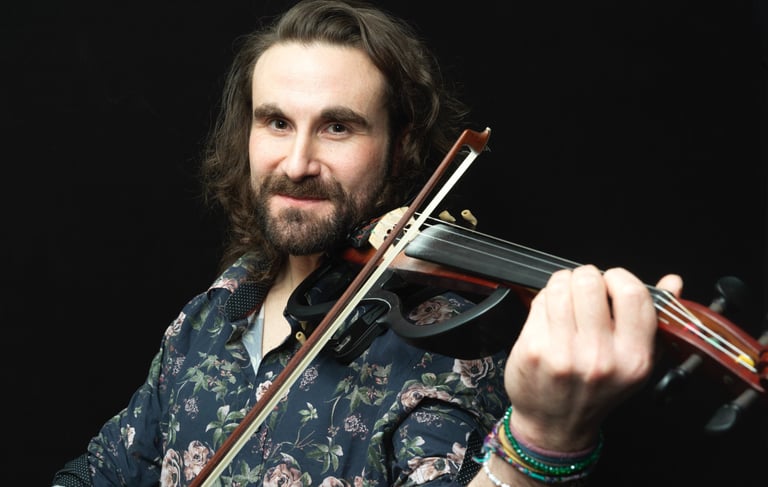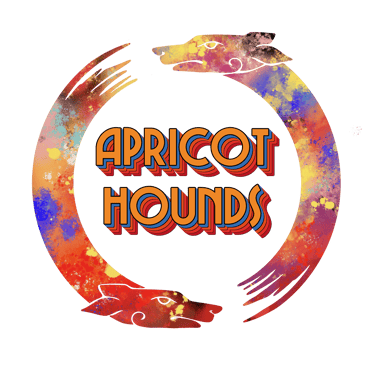The Sonic Tapestry of Vaughan Bloomfield: Exploring My Musical Influences


Music, for me, has always been a journey through different landscapes, where each note and rhythm paints a picture, tells a story, or evokes an emotion. As a musician, my sound is the sum of countless influences, each leaving its mark on how I approach the art of creating music. In this post, I want to share with you the key figures and genres that have shaped my musical world, from groundbreaking artists to timeless genres that continue to inspire me every day.
Don "Sugarcane" Harris: The Blues Violin Maverick
Don "Sugarcane" Harris was a true pioneer, taking the violin into uncharted territories of blues and rock. His work with legends like Frank Zappa, John Lee Hooker, and John Mayall is nothing short of revolutionary. What draws me to Sugarcane’s playing is his fearless approach to the violin, turning it into an electrifying force in genres typically dominated by guitar and vocals. His ability to blend raw blues emotion with technical virtuosity has profoundly influenced my own approach to both playing and arranging music. Whenever I pick up my instrument, I think about how Sugarcane broke boundaries, and I strive to bring that same sense of innovation and boldness to my work.
The Waterboys: A Fusion of Rock and Celtic Soul
The Waterboys have always held a special place in my heart. Their ability to fuse rock with traditional Celtic music creates a sound that is both powerful and poetic. Songs like "The Whole of the Moon" and "Fisherman’s Blues" are perfect examples of how they blend rich lyrical storytelling with expansive, often mystical soundscapes. The Waterboys’ music inspires me to explore the intersection of different musical traditions, finding that sweet spot where diverse influences come together to create something truly unique and emotionally resonant.
Led Zeppelin: The Architects of Rock Majesty
Led Zeppelin’s influence on me cannot be overstated. They were masters of crafting epic soundscapes that could be both heavy and ethereal. Whether it's the primal energy of "Whole Lotta Love" or the delicate beauty of "Going to California," Zeppelin’s music is a study in contrasts—blending hard rock, blues, folk, and even classical elements into a cohesive whole. Their music has taught me the importance of dynamics in composition—the way a song can ebb and flow, taking the listener on a journey. Zeppelin's innovative use of studio techniques and their fearless approach to genre-blending have deeply influenced how I think about producing and arranging music.
60s Psychedelic Music: The Sound of the Mind's Eye
The psychedelic music of the 1960s is like a kaleidoscope for the ears, and it has had a profound impact on how I perceive and create music. Bands like The Doors, Pink Floyd, and Jefferson Airplane pushed the boundaries of what rock music could be, using experimental sounds, surreal lyrics, and unconventional song structures to explore new dimensions of consciousness. This era of music encourages me to think outside the box, to use music as a tool for exploring the unknown, and to create soundscapes that challenge the listener's perception of reality.
70s Jazz Fusion: Where Complexity Meets Groove
The 1970s were a golden age for jazz fusion, a genre that marries the improvisational elements of jazz with the electric energy of rock. Artists like Weather Report, Mahavishnu Orchestra, and Return to Forever created intricate, dynamic music that is both technically demanding and deeply groovy. Jazz fusion has influenced my approach to rhythm and melody, teaching me the importance of spontaneity and interaction between musicians. The genre's complexity challenges me to constantly push my own musical boundaries, striving for that perfect balance between precision and feel.
Ambient and Soundscape Music: The Art of Atmosphere
Ambient music and soundscapes have always fascinated me for their ability to create a mood or evoke a place without the need for traditional song structures. Pioneers like Brian Eno and contemporary artists like Jon Hopkins use texture, tone, and space to craft immersive auditory experiences. This genre has inspired me to think about the power of silence and subtlety in music—the idea that sometimes, the spaces between notes can be just as important as the notes themselves. Ambient music encourages me to create compositions that are not just heard but felt, enveloping the listener in a sonic world.
Light English Classical Music: Elegance in Simplicity
There’s something deeply comforting about the light classical music of English composers like Eric Coates, William Walton, and William Lloyd Webber. Their work often carries a sense of pastoral beauty, evoking the rolling landscapes and serene countryside of England. This music has influenced my appreciation for melody and harmony, teaching me that simplicity and elegance can be just as powerful as complexity and innovation. It’s a reminder that music can be both sophisticated and accessible, speaking to the heart as much as the mind.
Conclusion
My musical journey is a tapestry woven from diverse threads—each influence, whether it’s an artist, a genre, or a specific era, adds a unique colour and texture to the music I create. From the bluesy intensity of Don "Sugarcane" Harris to the ambient expanses of soundscape music, every element contributes to the sound that I hope resonates with listeners. As I continue to explore and evolve as a musician, these influences remain my guiding lights, reminding me of the endless possibilities that music offers.
Thank you for taking the time to explore these influences with me. I hope they give you a deeper understanding of the sounds and stories that shape my music.


